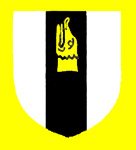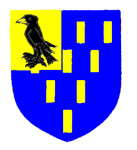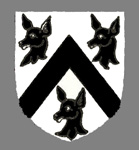
Barony of Bedford
Volume Three of The Victoria County History for Bedfordshire, published in 1912 gives a summary history of each of the manors in Cardington. The main manor can be traced back to the holding recorded in Domesday Book of 1086 as belonging to Hugh de Beauchamp, created Baron of Bedford by King William II (1087-1100). The manor remained in the Beauchamp family until 1265 when John de Beauchamp was killed at the Battle of Evesham fighting for Simon de Montfort against King Henry III (1216-1272). The manor, like the rest of John’s substantial possessions, including the Barony of Bedford, was then divided.
The greater part of the manor passed to Joan, daughter of John’s sister Ela de Beauchamp who married Michael Picot, and afterwards Ralph Paynell. The smaller portions became Wake Manor and the lesser Cardington Manor. Ralph was succeeded as Lord of the Manor by John, son of Baldwin Picot, probably a nephew of Michael Picot, deceased. John Picot died in 1337 and was succeeded by his son John, who died in 1361 and was succeeded by his wife Isabel and, on her death in 1375, by her son Baldwin Picot.

The Gascoigne family coat of arms
Baldwin Picot was survived by a daughter, Dorothy who married James Gascoigne, the son of a Chief Justice, Sir William (1350? – 1419). The manor then remained in the Gascoigne family for over a hundred and fifty years. One of the family was the Elizabethan poet George Gascoigne (c.1535-1577). The last of the Gascoigne Lords of the Manor, at his death, left two daughters as his co-heirs – Dorothy, wife of Sir Gerard Harvey of Thurleigh and Elizabeth, wife of Sir George Blundell and it was the latter who obtained Cardington Manor.

The Blundell family coat of arms
The manor remained in the Blundell family for over a century. Sir George died in 1688 and was succeeded by his son, another George. Another George was Lord of the Manor and died in 1756. The Manor was then held by William Nailour Blundell who sold it to brewer Samuel Whitbread I in 1769.

The Whitbread family coat of arms
The Whitbread family continued as Lords of the Manor into the 20th century. A succession of Law of Property Acts in the 1920s extinguished all manorial incidents, courts and copyhold tenure of land. This effectively abolished manors in all but name.